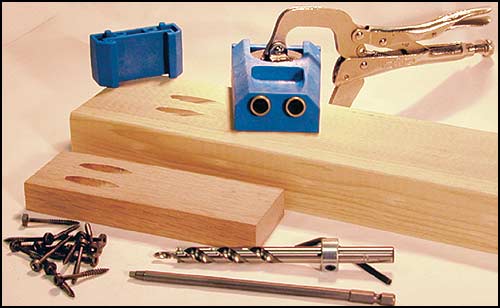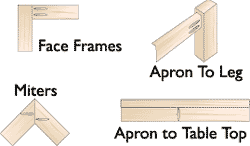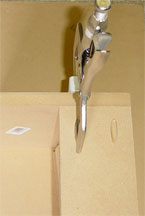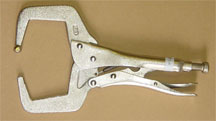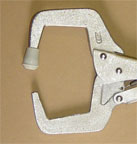
|
What it Does What a Kreg JIg does is nothing new, pocket holes have been used since ancient Egyptian times when wooden dowels were used in pocket holes. Until the Kreg JIg came along pocket holes were either carved out with a gouge , or drilled with a Forstner bit using a jig on a drill press. Despite rumors to the contrary they are a method of traditional joinery, however they were used only when necessary and usually well hidden. They can be found in many quality pieces of furniture by reputable craftsmen. Unfortunately with the advent of the Kreg Jig they are often over used in ways that do not always make the best joint or look attractive, hence many traditionalist tend to look down upon their use. Using a Kreg Jig Whether you are building indoor furniture and cabinets, doing home repairs or building outdoor projects such as fences and decks this is one of the handiest tools you can have in your arsenal.
There are three steps to making a simple butt joint.
1. Clamp jig to board. Other joints are made just as easily.
Common Uses: Cabinet assembly, all parts can be cut in your shop, transported to the job site and assembled there, no need for a large van to haul the cabinets. Table top aprons, drill on ends into legs. Picture frames, fasten the miters securily with screws. Fences and decks, join the rails to the posts. Fix squeaky floors, place the jig on the floor joist pointing up at the floor, drive a screw through the hole in the jig to hold it in position and drill for the screw.
Shop Rocklers for Kreg Jigs and SuppliesAssembly Clamps
Kreg Screws
There are two styles of screws, pan head and Maxiloc, pan head are used for thinner material, 5/8" thick or less as they have a smaller diameter head that will not protrude above the surface of the wood. There are different thread types available, fine for hardwoods, coarse for hardwoods as well as a combination style called a Hi-lo that works with either type of wood. Screws also come in different grades of material for different uses, zinc, bluecoat or stainless. Kreg Screw Length ChartRecommended lengths using material of like thicknesses.
|
